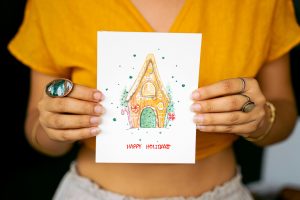Why Do Good Girls Like Bad Guys? Psychology Behind Romance
Why do good girls like bad guys? This question has intrigued psychologists, authors, and just about anyone who has witnessed this fascinating attraction. It’s a phenomenon we see in movies, songs, and real life, where the “good girl” seems drawn to the “bad boy,” leaving people wondering what’s happening beneath the surface.
The fascination with “bad boys” is not about liking danger for danger’s sake. Instead, it’s often about unmet psychological needs, hidden desires, and the thrill of unpredictability. In this article, we’ll explore the deeper reasons behind this attraction, using the latest psychology and insights to help you understand why this dynamic is so captivating.
Let’s dive into the unexpected but fascinating psychology behind this classic pairing.
What is the “Bad Boy” Image?
To understand why good girls might be attracted to bad guys, we first need to define what a “bad boy” is. A “bad boy” doesn’t necessarily mean someone who’s cruel or immoral; rather, it’s someone who tends to be rebellious, independent, confident, or even a bit unpredictable. They break the social norms, often embodying qualities that appear alluring and exciting in contrast to “safer” choices.
This confidence can come off as power and independence, making the “bad boy” stand out in a sea of conventional personalities. In a world where many feel confined to social expectations, these characters can seem refreshing and a little thrilling. But what makes this allure so powerful?
The Thrill of the Unknown and Desire for Excitement
Humans are naturally wired to seek excitement and novelty, which comes from the brain’s reward system. When something is unpredictable, it triggers dopamine, the brain’s “feel-good” chemical. This surge of dopamine makes things exciting, stimulating, and memorable. It explains why a rollercoaster is thrilling or why trying a new hobby feels exhilarating.
Bad boys often embody this excitement, breaking routines and defying expectations. Unlike “nice” or predictable partners, bad boys keep others guessing, which can make them irresistible, especially to someone who feels trapped in a predictable or routine-driven life. This isn’t about “danger” in a literal sense but about emotional engagement that feels intense and thrilling. This thrill-seeking response explains part of the attraction—it’s an experience rather than a specific type of person.
The Need for Emotional Depth and Passion
One of the common traits of the “bad boy” archetype is emotional intensity. Bad boys are often portrayed as people who live with passion, even if it’s a “dark” kind of passion. This intensity can be highly attractive for people who crave emotional depth, as they may believe a “bad boy” relationship will give them a sense of intensity missing elsewhere.
This longing for emotional engagement is actually rooted in our human psychology. According to relationship experts, many people are driven by a need to feel deeply connected, to experience “fireworks.” This connection becomes a core reason why someone might find themselves repeatedly drawn to “bad boys.” They see these relationships as a chance to experience passion and intensity that may feel absent in other areas of life.
The Appeal of Confidence and Authenticity
One key trait that makes the “bad boy” figure attractive is confidence. Whether they play by the rules or not, bad boys tend to display a natural self-assuredness that can be magnetic. This confidence can feel like authenticity because bad boys often refuse to mold themselves to fit social norms or expectations. They are unapologetically themselves, a quality that many find appealing.
Social psychology suggests that authenticity is one of the most attractive traits in a partner. This trait may make “bad boys” seem like a more genuine or “real” option compared to someone who is always polite, accommodating, or “safe.” People crave realness, and a bad boy’s refusal to follow conventional norms can make them appear more authentic.
The Idea of “Fixing” or Changing Someone
There’s a powerful psychological element known as the “rescue fantasy” that can come into play. Some people find themselves attracted to the idea of “changing” or “saving” someone from their darker traits. This phenomenon is common in relationships with “bad boys,” as the good girl may see her connection as something capable of helping him “reform.”
The rescue fantasy is deeply rooted in the need for purpose and validation. Helping or “saving” someone can feel rewarding, as if their love has the power to transform lives. This fantasy is even portrayed in countless movies and books, where the “good girl” helps the “bad boy” become a better person. In reality, though, relationships don’t usually work this way, but the fantasy remains compelling.
Attachment Styles: How Past Relationships Shape Attraction
Understanding attachment styles is crucial when it comes to attraction patterns. There are generally three main types: secure, anxious, and avoidant. People with an anxious attachment style, often due to inconsistent caregiving in childhood, might be drawn to “bad boys” because they tend to seek high-intensity relationships with emotional highs and lows. This attachment style craves excitement and is often comfortable with emotional unpredictability.
On the other hand, a secure attachment style may be less likely to find bad boys appealing, as they tend to look for stability and trust. By understanding attachment theory, people can begin to see how these patterns of attraction form and why certain dynamics repeat. Attachment patterns are critical in helping someone understand why they might be drawn to relationships that are full of emotional intensity but lack stability.
Cultural Narratives and Media Influence
From classic novels to modern-day movies, the “bad boy” trope has been deeply embedded in our culture. These cultural narratives shape ideas about romance, attraction, and what makes someone appealing. Many people are influenced, even subconsciously, by these stories and often romanticize the idea of “fixing” or “taming” someone. This romanticized view makes the “bad boy” image seem almost mythical, even though it’s far from realistic.
Movies and songs about heartbreak, rebellion, and “forbidden love” reinforce the allure. They create a fantasy that appeals to the desire for excitement, making people believe that “bad boys” provide a unique and thrilling kind of love. The media has a powerful role in reinforcing this archetype, shaping how we perceive attraction, relationships, and love.
The Influence of Self-Perception and Identity
A person’s own self-image and self-esteem play a role in why they might be drawn to a “bad boy.” For some, the relationship offers a way to “feel special,” as if winning over someone rebellious or difficult is proof of their worth. The idea of being able to attract someone seen as unattainable can be a confidence booster, even if it’s fleeting.
For example, a good girl who might see herself as “too safe” or “predictable” might find excitement and validation in the idea that she can attract someone edgy or rebellious. It’s an attempt to reshape or redefine one’s identity through association, adding layers of complexity to why certain types of people are attracted to each other.
The Hidden Lessons Behind the Attraction
The attraction between good girls and bad boys is not as simple as it appears. It’s rooted in psychology, past experiences, self-perception, and even cultural narratives. By understanding these elements, people can learn a lot about themselves and what they’re really seeking in a partner.
This attraction to “bad boys” tells us that human beings are always searching for something more—a sense of excitement, a feeling of passion, a taste of authenticity, or the dream of “saving” someone. While these relationships often don’t last, they offer a mirror, reflecting our deepest desires and fears back at us.
Understanding why good girls might be drawn to bad boys allows us to explore what we truly want in relationships and, ultimately, find connections that meet our real needs in healthy, fulfilling ways. This journey of self-discovery and self-understanding is the real adventure—the one that can lead to love that doesn’t need saving, fixing, or the thrill of the unknown to feel complete.
In a world obsessed with “bad boy” charm, perhaps the real magic is in finding someone who brings both excitement and stability, breaking the myth that we have to choose one over the other.
FAQs
- Why Are Bad Boys Often Seen as More Attractive Than Nice Guys?
Bad boys often exhibit traits like confidence, assertiveness, and a disregard for social norms, which can come across as exciting and unique. Psychologically, these traits create a sense of mystery and unpredictability that releases dopamine, the brain’s “feel-good” chemical. In contrast, nice guys are often more predictable, which may not stimulate the same level of excitement, especially for those craving novelty or intensity in a relationship. - Do Relationships with Bad Boys Usually Last?
While some relationships with “bad boys” can endure, many don’t last as long-term compatibility may be challenging. Bad boys may prioritize independence and their own desires over partnership, making it hard to build trust and stability. Although initial attraction may be high, the relationship can lack a strong foundation. It’s common for people drawn to “bad boys” to eventually seek partners who offer consistency and emotional safety. - What Does Science Say About Women’s Attraction to “Bad Boys”?
Research suggests that women’s attraction to “bad boys” may be partly biological and partly psychological. For instance, studies show that some women are drawn to men with risk-taking or rebellious traits due to evolutionary factors, as these characteristics might historically signal strength or survival skills. Psychological factors, like attachment style and personal self-esteem, also play a significant role in why some women are repeatedly attracted to these types of partners. - Can People Change Their Attraction to Bad Boys?
Yes, it’s possible to change attraction patterns by understanding the underlying psychological needs driving the attraction. Often, this involves identifying attachment styles, self-esteem issues, or unmet emotional needs. Therapy, self-reflection, and developing healthy relationship skills can help people become more aware of why they’re attracted to certain traits and learn to seek fulfilling partnerships based on stability and mutual respect. - Is the “Good Girl-Bad Boy” Dynamic Common in All Cultures?
While the “good girl-bad boy” dynamic is found worldwide, the extent of its appeal can vary by culture. In some societies, rebellion and independence are heavily romanticized in men, making the “bad boy” image highly attractive. However, in cultures that prioritize community, harmony, or tradition, the bad boy archetype may not be as appealing or might be viewed more critically. Cultural norms and media portrayals strongly influence how this dynamic is perceived and valued. - How Can a “Good Girl” Avoid Toxic Relationships with Bad Boys?
Avoiding toxic relationships involves developing self-awareness, understanding one’s emotional needs, and setting boundaries. Recognizing the difference between healthy excitement and harmful behavior is crucial. By prioritizing self-worth, emotional health, and a partner’s respect, people can avoid relationships that rely on drama or intensity rather than genuine connection. Developing clear boundaries and relationship standards can help attract healthier, more stable partners.
Upgrade your personal and professional growth to new heights!
Our Advanced Personal Growth Course, offers proven strategies and actionable insights to fuel your success. Don’t wait to unlock your full potential. Join today and start your journey of growth and self-improvement!







